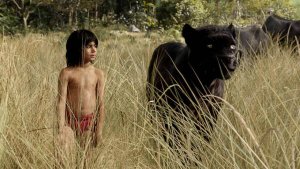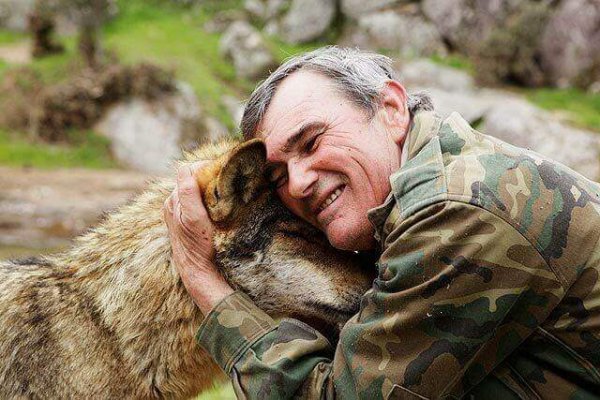"Wild children" and their behavior in society

One of the great debates that occupied an important part of our history is about the influence of society in childhood. Two of the great speakers in this debate were Jean-Jacques Rousseau on the one hand, and Thomas Hobbes on the other. Their ideas were about the goodness and wickedness of humanity, two issues thatwere closely related to the so-called “wild children”.
Jean-Jacques Rousseau (1896) argued that man is good by nature while society is the one that corrupts him. Hobbes (1588/2010) coined the famous phrase “man is wolf to man”, meaning that man is bad by nature and it is the mechanisms of social control that keep evil from destroying us.
But how to know who was right? It is impossible to separate a child from society in order to test this, for moral and ethical reasons, there are children who, due to different circumstances, have grown up isolated from society. These cases are know as “wild children”.
Víctor de Aveyron
Possibly the most famous case of a wild child is that of Victor de Aveyron. They captured Victor (Itard, 2012) when he was about eleven years old. After a week he escaped and, after winter, he was captured again in an abandoned house. In hospital, doctors proceeded to study his case.

One of the strongest theories about Victor’s case is that he suffered from an autism spectrum disorder. Given the strange behaviors he showed, his family abandoned him. Victor’s multiple scars were not due to life in the wild, but corresponded to physical abuse prior to when he was found in the forest.
According to one of the doctors who took his case (Itard, 1801), Victor was an unpleasantly dirty child, affected by spasmodic movements and even convulsions; he rocked incessantly like animals in the zoo; bit and scratched those who approached him; showed no affection to those who took care of him and, in short, was indifferent to everything and paid no attention to anything. Although his physical appearance improved as well as his sociability, attempts to teach him to speak and behave in a civilized manner did not succeed.
Marcos Rodríguez Pantoja
Although there are several cases of “wild children” who have lived with animals such as goats, dogs, gazelles, wolves, monkeys, etc., many of these are dismissed for lack of data that certify their authenticity. However, the case of Marcos stands out for being close and verifiable in time. Marcos’ parents sold him at age seven, to a landowner who gave him to a goatherd with whom he lived until their death in a cave. On the death of the goatherd, Marcos was left alone for eleven years until the Civil Guard found him. During those eleven years, his only company was wolves.
Anthropologist and writer Gabriel Janer Manila (1976) studied the case. The cause of his abandonment lay in a socio-economic context of extreme poverty. The skills that Marcos learned before leaving, along with his extraordinary natural intelligence, were what made his survival possible. During his isolation, Marcos learned the noises of the animals he lived with and used them to communicate with them, while little by little he abandoned human language.

Once he rejoined society, he began a readjustment to human customs although even in adult life he showed preference for life in the wild with animals. He also developed some animosity for the noise and smell of cities and maintained the belief that life among humans is worse than life with animals.
Genie
Genie’s parents (Rymer, 1999) had problems – her mother was blind due to a retinal detachment and had cataracts, and her father suffered from a depressive disorder that worsened when Genie’s grandmother died in a car accident. Genie started talking later than most children and doctors diagnosed a possible intellectual disability. For this reason, her father, faced with the fear that the authorities would take away his daughter, understood that he had to protect her from the dangers of the outside world.
Her father imprisoned Genie in her room with. She could make noises and spent her nights in a cage. Her diet consisted mostly of baby food. At 13, she only understood 20 words of which most were short and negative: stop, enough, no … Genie’s room was sealed, there was only a small hole that allowed her to see 5 centimeters of the world. The other inhabitants of the house were forbidden to visit or even to speak to her.
In the end, Genie’s mother ran away with her and her brother so the authorities could put Genie in treatment (Reynolds and Fletcher-Janzen, 2004). The first part of the treatment was isolating the girl from her mother and putting her in foster care, and the conclusion was that she had experienced a regression. She was worse than when they found her. Then she returned to her mother, who realized that it was very difficult to take care of her because of what she went through in various adoptive homes.

Rochom P’ngieng
Rochom (El País, 2007) was a Cambodian girl who got lost at 9 in the jungle, reappearing 10 years later. After disappearing from her parents’ farm, she was found after ten years by a farmer who did not know anything about her, and turned her over to the police.
When she returned to society, Rochom could not stand clothing, she did not remember talking and just made grunts. She always walked on her haunches and when she was left alone, she tried to escape. The multiple scars she had made others think that she could have been in captivity and, even, suffered abuse (The Guardian, 2007). Subsequently, Rochom escaped they found her 10 days later in a septic tank. She was rescued and admitted to a hospital where, according to her parents, she was weak, sleeping all day. She looked pale and feeble.
Insertion in society
The return of these “wild children” to society has not been easy. Some factors such as the degree of isolation and the age that they were when they left society are decisive when it comes to understanding their behavior in society (Singh and Zingg, 1966). “Wild children” who have been deprived of all contact with humans, who have not even seen humans, will have greater problems. Those who have lived among animals may have better adaptation.
Vicarious learning is a very important part of development and those who have lost it will have more difficulties with performing behaviors they have never seen before. The deprivation of stimuli at a very early age will define the experiences of these children (McCrone, 1994). In this sense, isolation can even limit body movements and create physical malformations. Other basic skills such as spatial memory may not develop in situations of isolation.
On the other hand, especially for those “wild children” who have lived with animals, naturalistic intelligence (Gardner, 2010) is usually very developed. This is the ability to perceive the relationships between species, groups of objects and people, recognizing the differences and similarities between them. It specializes in identifying, discerning, observing and classifying members of groups or species of flora and fauna, being the field of observation and efficient use of the natural world.
However, the lack of interactions with other people and effective ties are basic skills that “wild children” will not develop. Because of this, and to the great cultural component of emotions and their regulation, these children have difficulty adapting to those unwritten rules that govern the functioning of any society.
Communication for “wild children”
The development of language is another crucial point. Humans, at birth, are capable of making more than 200 different sounds. Society, through reinforcement, will indicate which of these sounds correspond to the language or languages that children will end up speaking. Those children who do not receive language since they are young will have more difficulty in pronouncing it well. The same thing happens with grammar.
The linguist Noam Chomsky (1957/1999) suggested that there is a limiting period to learn a language naturally. This period is three years and once this time has passed without the child learning a language, they will not be able to to develop the brain structures necessary to learn one. While you can learn words, complete command of the language demands extraordinary effort.

As Chomsky suggests, at birth we have innate brain structures. These evolutionarily-formed structures are pre-programmed to develop certain behaviors or actions such as talking. However, if these structures do not receive the necessary stimuli so that they can complete their development before a certain time, they will cease to be useful and will not achieve their purpose. In addition, it is necessary that the development of these structures occurs at the same time as that of other brain structures.
“Wild children” off the screen
The image of Mowgli, the child of the jungle created by the writer Rudyard Kipling (1894), does not correspond to the reality of “wild children”, just as we cannot look at Tarzan as a reference. The deprivations suffered by these children do not make them revolutionaries when they enter society.
The future prospects for “wild children” are usually not good. After being deprived of stimuli and experiences common to the human species, they will go through critical periods to develop certain skills, such as language, which they will not be able to return to or recover afterwards.
These shortcomings or lack of skills precedes the lack of stimuli and reinforcement for the development of these to occur. Deprivation, at a critical stage, can impede the full development of skills such as language or spatial memory. All this, together with the difficulty that therapists have with their treatment, complicates education and reintegration.
One of the worst consequences for these “wild children” is that their life expectancy is very short. They are not ready for society just as society may not be ready for them. In this sense, the debate about the goodness and the wickedness of the human being and about a controlling or perverting character of the society is still open.
Bibliography:
Singh, J. A. L. y Zingg, R. M. (1966). Wolf-children and feral man. Mishawaka: Shoe String Pr Inc.
Chomsky, N. (1957/1999). Estructuras sintácticas. Buenos Aires: Siglo XXI.
El País (2007). La última niña salvaje. Encontrado en: https://elpais.com/sociedad/2007/01/19/actualidad/1169161205_850215.html
Janer Manila, G. (1976). La problemática educativa de los niños selváticos: El caso de “Marcos”. Encontrado en: http://www.raco.cat/index.php/AnuarioPsicologia/article/viewFile/64461/88142
Gardner, H. (2010). La inteligencia reformulada: Las inteligencias múltiples en el siglo XXI. Barcelona: Paidós.
Hobbes, T. (1588/2010). Leviathan. Revised Edition, eds. A.P. Martinich and Brian Battiste. Peterborough, ON: Broadview Press.
Itard, J. M. G. (1801). De l’education d’un homme sauvage ou des premiers developpemens physiques et moraux du jeuneççç sauvage de l’Aveyron. París: Goujon.
Itard, J. M. G. (2012) El niño salvaje. Barcelona: Artefakte.
Kipling, R. (1894). The jungle book. Reino Unido: Macmillan Publishers.
McCrone, J. (1994). Wolf children and the bifold mind. En J. McCrone (Ed.), The myth of irrationality: The science of the mind from Plato to Star Trek. New York: Carroll & Graf Pub.
Reynolds, C. R., Fletcher-Janzen, E. (2004). Concise encyclopedia of special education: A reference for the education of the handicapped and other exceptional children and adults. Hoboken, NJ: John Wiley & Sons, pp. 428-429.
Rousseau, J.-J, (1896). Du contrat social (El contrato social). Paris: Félix Alcan.
Rymer, R. (1999). Genie: A scientific tragedy. UK: Harper Paperbacks.
The Guardian (2007). Wild child? Encontrado en: https://www.theguardian.com/world/2007/jan/23/jonathanwatts.features11
One of the great debates that occupied an important part of our history is about the influence of society in childhood. Two of the great speakers in this debate were Jean-Jacques Rousseau on the one hand, and Thomas Hobbes on the other. Their ideas were about the goodness and wickedness of humanity, two issues thatwere closely related to the so-called “wild children”.
Jean-Jacques Rousseau (1896) argued that man is good by nature while society is the one that corrupts him. Hobbes (1588/2010) coined the famous phrase “man is wolf to man”, meaning that man is bad by nature and it is the mechanisms of social control that keep evil from destroying us.
But how to know who was right? It is impossible to separate a child from society in order to test this, for moral and ethical reasons, there are children who, due to different circumstances, have grown up isolated from society. These cases are know as “wild children”.
Víctor de Aveyron
Possibly the most famous case of a wild child is that of Victor de Aveyron. They captured Victor (Itard, 2012) when he was about eleven years old. After a week he escaped and, after winter, he was captured again in an abandoned house. In hospital, doctors proceeded to study his case.

One of the strongest theories about Victor’s case is that he suffered from an autism spectrum disorder. Given the strange behaviors he showed, his family abandoned him. Victor’s multiple scars were not due to life in the wild, but corresponded to physical abuse prior to when he was found in the forest.
According to one of the doctors who took his case (Itard, 1801), Victor was an unpleasantly dirty child, affected by spasmodic movements and even convulsions; he rocked incessantly like animals in the zoo; bit and scratched those who approached him; showed no affection to those who took care of him and, in short, was indifferent to everything and paid no attention to anything. Although his physical appearance improved as well as his sociability, attempts to teach him to speak and behave in a civilized manner did not succeed.
Marcos Rodríguez Pantoja
Although there are several cases of “wild children” who have lived with animals such as goats, dogs, gazelles, wolves, monkeys, etc., many of these are dismissed for lack of data that certify their authenticity. However, the case of Marcos stands out for being close and verifiable in time. Marcos’ parents sold him at age seven, to a landowner who gave him to a goatherd with whom he lived until their death in a cave. On the death of the goatherd, Marcos was left alone for eleven years until the Civil Guard found him. During those eleven years, his only company was wolves.
Anthropologist and writer Gabriel Janer Manila (1976) studied the case. The cause of his abandonment lay in a socio-economic context of extreme poverty. The skills that Marcos learned before leaving, along with his extraordinary natural intelligence, were what made his survival possible. During his isolation, Marcos learned the noises of the animals he lived with and used them to communicate with them, while little by little he abandoned human language.

Once he rejoined society, he began a readjustment to human customs although even in adult life he showed preference for life in the wild with animals. He also developed some animosity for the noise and smell of cities and maintained the belief that life among humans is worse than life with animals.
Genie
Genie’s parents (Rymer, 1999) had problems – her mother was blind due to a retinal detachment and had cataracts, and her father suffered from a depressive disorder that worsened when Genie’s grandmother died in a car accident. Genie started talking later than most children and doctors diagnosed a possible intellectual disability. For this reason, her father, faced with the fear that the authorities would take away his daughter, understood that he had to protect her from the dangers of the outside world.
Her father imprisoned Genie in her room with. She could make noises and spent her nights in a cage. Her diet consisted mostly of baby food. At 13, she only understood 20 words of which most were short and negative: stop, enough, no … Genie’s room was sealed, there was only a small hole that allowed her to see 5 centimeters of the world. The other inhabitants of the house were forbidden to visit or even to speak to her.
In the end, Genie’s mother ran away with her and her brother so the authorities could put Genie in treatment (Reynolds and Fletcher-Janzen, 2004). The first part of the treatment was isolating the girl from her mother and putting her in foster care, and the conclusion was that she had experienced a regression. She was worse than when they found her. Then she returned to her mother, who realized that it was very difficult to take care of her because of what she went through in various adoptive homes.

Rochom P’ngieng
Rochom (El País, 2007) was a Cambodian girl who got lost at 9 in the jungle, reappearing 10 years later. After disappearing from her parents’ farm, she was found after ten years by a farmer who did not know anything about her, and turned her over to the police.
When she returned to society, Rochom could not stand clothing, she did not remember talking and just made grunts. She always walked on her haunches and when she was left alone, she tried to escape. The multiple scars she had made others think that she could have been in captivity and, even, suffered abuse (The Guardian, 2007). Subsequently, Rochom escaped they found her 10 days later in a septic tank. She was rescued and admitted to a hospital where, according to her parents, she was weak, sleeping all day. She looked pale and feeble.
Insertion in society
The return of these “wild children” to society has not been easy. Some factors such as the degree of isolation and the age that they were when they left society are decisive when it comes to understanding their behavior in society (Singh and Zingg, 1966). “Wild children” who have been deprived of all contact with humans, who have not even seen humans, will have greater problems. Those who have lived among animals may have better adaptation.
Vicarious learning is a very important part of development and those who have lost it will have more difficulties with performing behaviors they have never seen before. The deprivation of stimuli at a very early age will define the experiences of these children (McCrone, 1994). In this sense, isolation can even limit body movements and create physical malformations. Other basic skills such as spatial memory may not develop in situations of isolation.
On the other hand, especially for those “wild children” who have lived with animals, naturalistic intelligence (Gardner, 2010) is usually very developed. This is the ability to perceive the relationships between species, groups of objects and people, recognizing the differences and similarities between them. It specializes in identifying, discerning, observing and classifying members of groups or species of flora and fauna, being the field of observation and efficient use of the natural world.
However, the lack of interactions with other people and effective ties are basic skills that “wild children” will not develop. Because of this, and to the great cultural component of emotions and their regulation, these children have difficulty adapting to those unwritten rules that govern the functioning of any society.
Communication for “wild children”
The development of language is another crucial point. Humans, at birth, are capable of making more than 200 different sounds. Society, through reinforcement, will indicate which of these sounds correspond to the language or languages that children will end up speaking. Those children who do not receive language since they are young will have more difficulty in pronouncing it well. The same thing happens with grammar.
The linguist Noam Chomsky (1957/1999) suggested that there is a limiting period to learn a language naturally. This period is three years and once this time has passed without the child learning a language, they will not be able to to develop the brain structures necessary to learn one. While you can learn words, complete command of the language demands extraordinary effort.

As Chomsky suggests, at birth we have innate brain structures. These evolutionarily-formed structures are pre-programmed to develop certain behaviors or actions such as talking. However, if these structures do not receive the necessary stimuli so that they can complete their development before a certain time, they will cease to be useful and will not achieve their purpose. In addition, it is necessary that the development of these structures occurs at the same time as that of other brain structures.
“Wild children” off the screen
The image of Mowgli, the child of the jungle created by the writer Rudyard Kipling (1894), does not correspond to the reality of “wild children”, just as we cannot look at Tarzan as a reference. The deprivations suffered by these children do not make them revolutionaries when they enter society.
The future prospects for “wild children” are usually not good. After being deprived of stimuli and experiences common to the human species, they will go through critical periods to develop certain skills, such as language, which they will not be able to return to or recover afterwards.
These shortcomings or lack of skills precedes the lack of stimuli and reinforcement for the development of these to occur. Deprivation, at a critical stage, can impede the full development of skills such as language or spatial memory. All this, together with the difficulty that therapists have with their treatment, complicates education and reintegration.
One of the worst consequences for these “wild children” is that their life expectancy is very short. They are not ready for society just as society may not be ready for them. In this sense, the debate about the goodness and the wickedness of the human being and about a controlling or perverting character of the society is still open.
Bibliography:
Singh, J. A. L. y Zingg, R. M. (1966). Wolf-children and feral man. Mishawaka: Shoe String Pr Inc.
Chomsky, N. (1957/1999). Estructuras sintácticas. Buenos Aires: Siglo XXI.
El País (2007). La última niña salvaje. Encontrado en: https://elpais.com/sociedad/2007/01/19/actualidad/1169161205_850215.html
Janer Manila, G. (1976). La problemática educativa de los niños selváticos: El caso de “Marcos”. Encontrado en: http://www.raco.cat/index.php/AnuarioPsicologia/article/viewFile/64461/88142
Gardner, H. (2010). La inteligencia reformulada: Las inteligencias múltiples en el siglo XXI. Barcelona: Paidós.
Hobbes, T. (1588/2010). Leviathan. Revised Edition, eds. A.P. Martinich and Brian Battiste. Peterborough, ON: Broadview Press.
Itard, J. M. G. (1801). De l’education d’un homme sauvage ou des premiers developpemens physiques et moraux du jeuneççç sauvage de l’Aveyron. París: Goujon.
Itard, J. M. G. (2012) El niño salvaje. Barcelona: Artefakte.
Kipling, R. (1894). The jungle book. Reino Unido: Macmillan Publishers.
McCrone, J. (1994). Wolf children and the bifold mind. En J. McCrone (Ed.), The myth of irrationality: The science of the mind from Plato to Star Trek. New York: Carroll & Graf Pub.
Reynolds, C. R., Fletcher-Janzen, E. (2004). Concise encyclopedia of special education: A reference for the education of the handicapped and other exceptional children and adults. Hoboken, NJ: John Wiley & Sons, pp. 428-429.
Rousseau, J.-J, (1896). Du contrat social (El contrato social). Paris: Félix Alcan.
Rymer, R. (1999). Genie: A scientific tragedy. UK: Harper Paperbacks.
The Guardian (2007). Wild child? Encontrado en: https://www.theguardian.com/world/2007/jan/23/jonathanwatts.features11
This text is provided for informational purposes only and does not replace consultation with a professional. If in doubt, consult your specialist.







